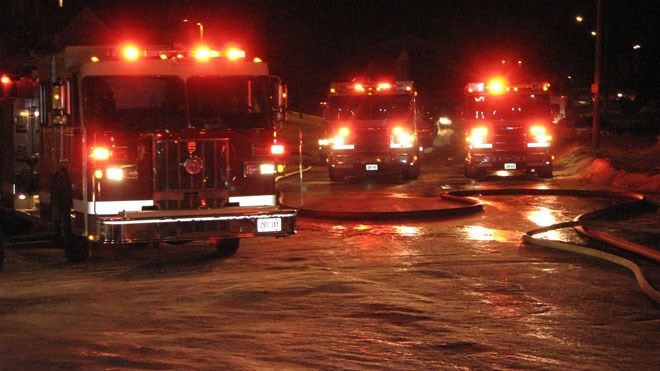A report headed to city council April 10 recommends Greater Sudbury not join a provincial pilot project that combines the duties of firefighters and paramedics.
The fire-medics program would see firefighters receive training to respond to less serious medical calls. The report says communities in the United States are already using fire-medics.
“In Ontario, interest appears to be strongest among members of the Ontario Professional Fire Fighters Association (OPFFA),” the report says.
Since the plan was announced in December, unions representing paramedics have come out strongly against the idea. With the province moving ahead with pilot projects in two municipalities, staff in Sudbury say the proposal raises some potentially difficult issues.
First, one of the reasons for the program is to improve response times. But a 2016 survey found paramedics in Sudbury are in the top five in the province when it comes to response times.
“Despite significant challenges associated with the city’s vast geography, Greater Sudbury is ranked fifth in reported actual performance among the 52 services in the province,” the report said. “Locally, when fire services responds to medical tiered calls, paramedic services arrives prior to, or at about the same time as, fire services approximately 90 per cent of the time.”
Another issue is “interest arbitration,” the term for the way firefighters negotiate collective agreements. Since they can't go on strike, contract awards are determined by a third party. That puts the city in the position of having to accept wage and workplace rules it opposes, the report said.
“(That) allows arbitrators to impose awards on unwilling employers that directly impact the employer’s ability to determine how it will deploy its workforce, as evidenced by the experience of many municipalities in regards to the 24-hour shift, and retention pay which started as a voluntary model and was subsequently imposed on municipalities through interest arbitration awards,” the report said.
“In the absence of legislative protection, unwilling municipalities may be forced to adopt a fire-medic model as a result of interest arbitration.”
The financial implications could be large, the report said, because the province currently pays half the cost of paramedic salaries, while the city pays the full cost for full-time firefighters. That could lead to the province downloading the cost of paramedic services by folding them in with firefighters.
“Implementation of the proposed model could divert financial and physical resources from the paramedic services division, impacting service delivery and efficiency as costs for wages and equipment are higher in the fire service,” the report said. “Expensive fire vehicles would incur additional wear and tear through the increased call volume. For example, paramedics respond to approximately 7,000 calls per year in the downtown area.”
Fire-medics would also duplicate current services without adding any benefit to patients, the report said. And with resentment still fresh after the failed fire optimization plan last year, introducing fire-medics could make things even worse.
“Labour relation dynamics between firefighters and paramedics have lead to conflict in municipalities across the province, including Greater Sudbury, affecting the day-to-day relationships,” the report said. “This is already being seen in relationship to the proposed pilot through recent media statements and 'dueling' surveys.
“Considering the different legislative and labour relations agreements in the fire and ambulance sectors, it is reasonable to the proposed pilot will lead to labour disputes and litigation. There is no objective data to demonstrate this proposed service model will improve patient outcome or response times.”
Read the full report here. (http://agendasonline.greatersudbury.ca/index.cfm?pg=feed&action=file&agenda=report&itemid=23&id=1239)
